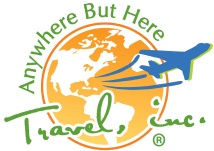SWEDEN
Sweden is the 5th largest country in area in Europe yet its terrain can be broken down into two regions. The south is agricultural and the north is heavily forested, the latter making up 65% of the country. It is bordered by Norway and Finland and is connected to Denmark by a bridge tunnel. Sweden also has a long extensive coastline. 13% of the country is within the Arctic Circle.
The population is around 9 million people. One common knick name for Sweden is “Land of Lakes and Castles”.
Many people might include Sweden as part of a larger trip to Europe or Scandinavia but you could easily spend your entire vacation there too.
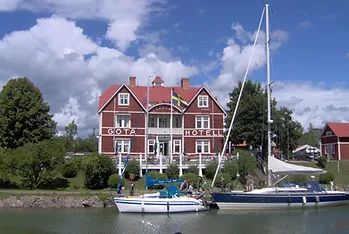
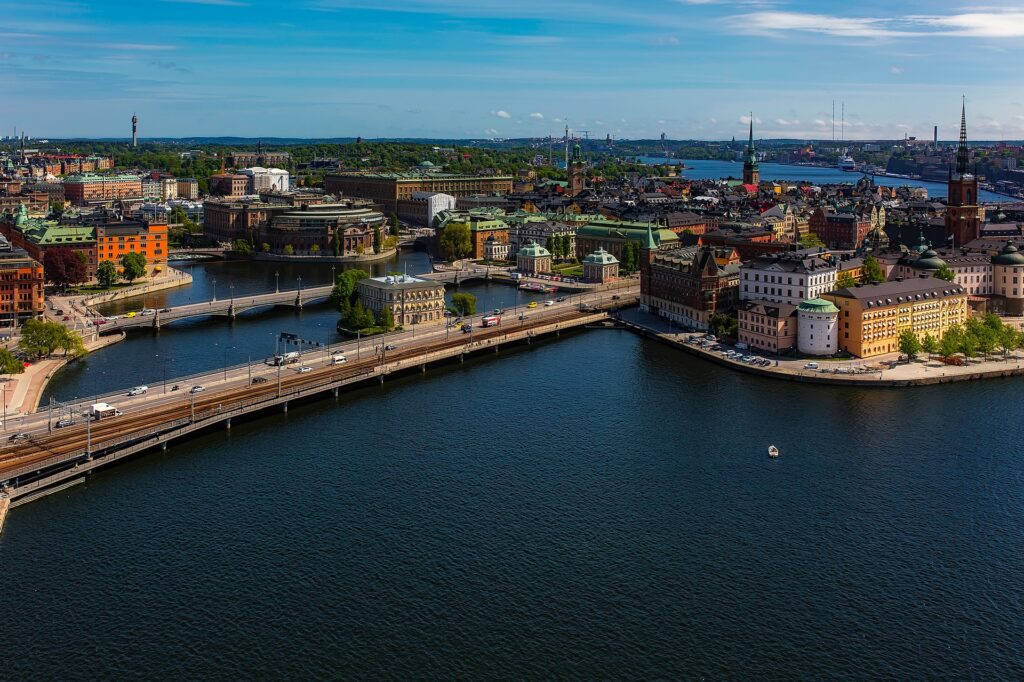
Overview
Monica has been to Sweden at least a dozen times. Why so many times? Her husband is from Sweden and so they have made the journey to his homeland to visit family and now visit every other year.
Sweden is often missed when people travel to Europe but it is one of her favorite places to go. We recommend that you include it if you can.
There are a number of reasons why you should visit Sweden. Some of the ones that have come across our desks have been for genealogy, visiting relatives, visiting au pairs a family hosted and to see the Northern Lights. There are many more reasons why you should travel to Sweden as it is one of the hidden gems of Scandinavia. There are thousands of coastal islands and inland lakes and about 65% of the country is covered in forests so it is a nature lover's paradise.
Stockholm is one of our favorite cities in the world with museums, restaurants, amusement parks and old architecture.
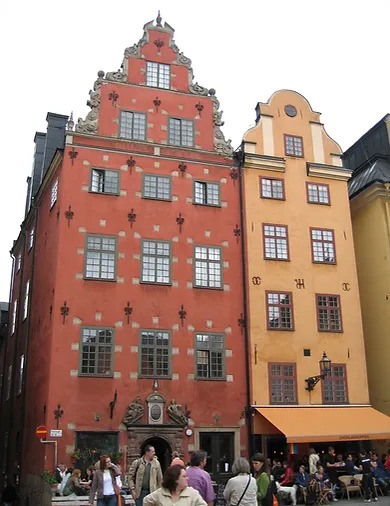
Monica's Top Tips
- Winter Travel? You must visit the famous ICEHOTEL and take in the Northern Lights (Aurora Borealis). This hotel is the first and largest hotel entirely built of snow and ice. It is completely constructed from scratch every year and many rooms have unique ice sculptures that are created by artists from around the world. They also have some warm rooms and they have added a permanent cold structure so you can stay in a cold room year round. The best time to catch the lights in Sweden is September to March.
- Costs? Staying in Sweden is not for the budget traveler. It can be done but it is really hard to do it well. People are often surprised at the cost of simple things like food, drinks and hotels. Sweden is a socialist country which means that everything is taxed very high.
- Safe? In general, it is very safe to travel to Sweden and most people are eager to speak English.
- Food? There is a lot of pride in Swedish cuisine and it is often simple but tasty and healthy. A common practice is "fika" which is a coffee break often taken 1 or 2 times a day with sweets and of course, coffee. One thing to note is that Swedes like their coffee very strong!
- Tipping? If you are going out to eat, there is no need to tip but if you do feel the need, a tip of 10% is more than enough.
- Drinking? Swedes like to drink and beer is a popular beverage choice. They are also VERY strict about drinking and driving so if you are going to partake in even a low alcoholic beverage, make sure you have a designated driver, take a taxi or walk. There are many Swedes who won't drink the next day if they have been partaking in alcohol the previous day!
- Timing? Swedes are very punctual and are rarely early or late to anything.
- Sustainability? You have probably heard of Greta Thunberg right? She is one of the leading activists on the environment and really she is a result of what most Swedes care about. Sweden prides itself on sustainability and being eco-friendly.
- Gender Equality? With 83.8 out of 100 points, Sweden ranks 1st in the EU on the Gender Equality Index. Sweden is actually one of the most gender equal countries in the world.
- Shoes? If you are invited into someone's home, please remove your shoes upon entering.
- Arctic Plunge? Take a dip in the Scandinavian waters! Whether it's in the middle of summer or the depths of winter after coming out of a sauna. It's very refreshing, and it's definitely a story to tell back home.
- Nature Lover? Sweden is a great place for an active traveler and even those who just like some soft adventure activities. It is a beautiful country with so many lakes, forests and amazing archipelagos. It is not a hugely populated country so it is easy to find space to explore nature and solitude. Also, Sweden allows everyone to have access to walk, cycle, ride, ski and camp on any land (with some exceptions) and they call it the "Freedom to Roam". No matter what season you visit, there is bountiful nature to explore.
Things to Do
- Old Town, Stockholm - The Old Town (in Swedish, Gamla Stan is one of the largest and best preserved medieval city centers in Europe. Most of it is motor vehicle free. There is so much to see and do here on Sweden vacations including restaurants, cafes, bars, clubs and shops.
- Vasa Ship Museum, Stockholm - This is Stockholm’s most treasured and most visited museum on trips to Sweden. It is dedicated to just one ship, the Vasa, which was a huge 17th Century-built sailing ship that sank in the middle of Stockholm’s harbor, on its maiden voyage.
- Nobel Museum, Stockholm - It offers an insight into the history and recipients of the Nobel Prize since the awards’ inception in 1901.
- Abba Museum, Stockholm - This museum, is a must if you enjoy the music of Sweden’s famous singing quartet (think Mamma Mia), you will have a couple of hours of fun and music on Swedish vacations.
- Skansen, Stockholm - This is the oldest open-air museum in the world also located on the island of Djurgarden. It is combined with a zoo with animals native to Scandinavia.
- Drottningholm Palace, Stockholm - This is where the royal family really resides even though the Royal Palace is designated their official residency. This 17th Century, a beautiful Versailles–like palace is situated on Lovo Island is Sweden’s best-preserved royal palace.
- Stockholm Subway - Not officially an art gallery but the Stockholm Subway/Metro has, in 90 of its 100 stations, exhibits of sculptures, mosaics, paintings and engravings by more than 150 artists.
- Uppsala - This is the 4th largest city in Sweden located 70 km (44 miles) north of Stockholm. It has Scandinavia’s largest cathedral, originally constructed in the 13th Century and Uppsala Castle (built in 1550) contains the state hall where Swedish kings were crowned.
- Visby, Gotland - Gotland is the largest island in the Baltic Sea located off Sweden’s southeast coast. The city has been declared a UNESCO World Heritage site. Archaeological finds show that human life on the island pre-dates Christianity, stretching back over 8000 years.
- Ice Hotel, Jukkasjarvi - This ice hotel is rebuilt each year with snow and ice in the village of Jukkasjarvi, 17 km (11miles) from Kiruna, the northernmost town in Sweden.
- IKEA Museum, Malmo - It allows visitors to follow the development of IKEA by means of interior designs, furniture, products and events.
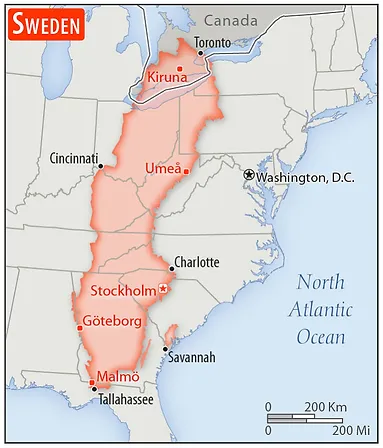
Geography
Sweden is the largest of the Scandinavian countries and it is the 5th largest country in all of Europe. It borders Norway and Finland with a connection to Denmark via the Oresund Bridge/Tunnel. It makes traveling to this country easier than it might seem at first. It is a tall, skinny country that stretches about 1000 miles (1600 km) north to south and about 310 miles (500 km) east to west. It is quite a bit larger than the state of California but most people think they are about the same size. If you laid Sweden on a map of the USA, its bottom most point would be Tallahassee, Florida and the top most post would be Toronto, Canada.
There are three major regions in Sweden: Central, Southern and North.
Central Sweden includes some interesting and attractive cities including the capital, Stockholm which is spread over 14 individual islands. The major attraction is the quaint Old Town (Gamla Stan) dating back to the 13th Century with its cobblestone streets and it is also where the Royal Palace is located. Other cities of interest are medieval Uppsala (a prosperous university city) and Sigtuna (the oldest town in the country).
Southern Sweden is the most populous part of Sweden and is home to two major cities: Gothenburg and Malmö. The former is known for its edgy bars, cafes and trendy shops and the latter for its proximity and accessibility to Copenhagen, Denmark.
Northern Sweden is sparsely populated and 13% of the country is located inside the Arctic Circle area (also known as Swedish Lapland). With its natural beauty, this is the perfect place to view both the Midnight Sun in the summer and the Northern Lights in the winter. Other pastimes here are hiking, dog sledding and snowmobiling.
MONEY & CURRENCY
Swedish Krona is the official currency of Sweden, Euros are usually accepted in the restaurants or shops around the tourists’ attractions, but it is always recommended to carry some cash, major cards are widely accepted too.
Tipping is not mandatory but is welcome at approx. 10% depending on the service.
Weather
Sweden is an enchanting country and it is not as cold as one might imagine despite its situation in the high latitudes. It is well worth exploring, whether along the meticulously maintained roads or on the extensive high-speed train system.
There are four distinct seasons in Sweden with weather ranging from very cold to pleasantly warm. It never gets too hot.
May to September is the best time to visit. In the summer, you will experience long days with more hours of sunshine – it stays light until even 11 pm. The only problem is that except for special festivals and folkloric presentations, the major cultural venues in Sweden, including opera, dance, ballet, and theatre, close in the summer.).
The first snow can fall as early as October but doesn’t really settle until November and lasts until March or early April except in the north when the snow can last into May.
The Swedes have a saying “there is no bad weather, only bad clothes”.
To view the Midnight Sun, the best months are June and July and to experience the Northern Lights, the best months are from late September to early April.
With so much to see and experience, you will need a few weeks (if not months) to fully enjoy the magic and charm of Sweden.

DID YOU KNOW?
- There are over 350,000 moose in Sweden. About 100,000 of these are hunted each year and about 6,000 are killed each year in car accidents. However, there are around 100,000 moose born each year so the population remains stable.
- The Nobel Prize was named after Alfred Nobel who was a famous scientist, inventor and businessman who was born in Stockholm, Sweden in 1833. He is also the inventor of dynamite and after his death, he decreed that his fortune be used to give prizes. The first one was given in 1901 and more than 950 prizes have been awarded.
- Sweden is one of the top users of renewable energy. The country uses about 54.5% of renewable energy with the most common ones being biomass and water.
- The 3-point seatbelt was a Swedish invention. Now a standard requirement in every passenger vehicle saving around one life every six minutes, it was developed by Swedish inventor and safety engineer Nils Bohlin in 1959 for Volvo.
- Sweden banned the smacking of children in 1979 and was the first country in the world to do so.
- Most of the country is almost cashless so be prepared to use your bank card most of the time.
- About 10 million people live in Sweden and there are only 23.5 people per square kilometer or 59 people per square mile.
- About 63% of the land mass is covered in forest and 9% is lakes and rivers. Also, about 10% of Sweden's land is protected by national parks and nature preserves. However, Sweden's constitution guarantees all lands to be accessible to the public.
- In the northern most point in Sweden, they get 56 days of daylight around the clock. It also means they get 32 days of complete darkness in the winter.
- Oat milk is a Swedish invention! It was developed by the Lund University food scientist Rickard Öste, who founded Oatly in 1994. Since then, oat milk has become a staple at a range of supermarkets and coffee shops around the world.
Sample Itineraries & Packages
There is really so much that can be done on a trip to Sweden and you could easily spend 1-2 weeks there and barely scratch the surface.
You also have to be aware of the large distances that can be traveled within Sweden. Many places are reachable via train but it does take more time. Some places you can travel to by plane but you have to take into consideration getting to the airport a few hours in advance, getting to and from the airport. Also, keep in mind that sometimes your destination isn't close to an airport so the train or a car makes more sense.
